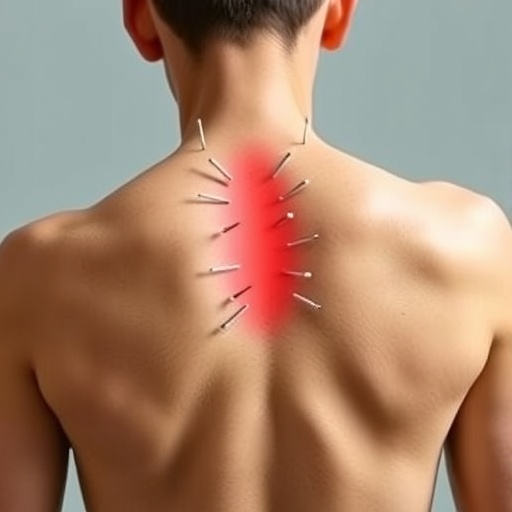
Acupuncture, a component of traditional Chinese medicine, has drawn increasing attention in recent years for its potential effectiveness in treating chronic musculoskeletal pain. The resurgence of interest in this method of treatment has led to extensive systematic reviews and discussions regarding its clinical practice guidelines. Recent research spearheaded by a team of scholars including Ho, Lai, and Chen has meticulously delineated the existing guidelines surrounding acupuncture’s application in managing chronic musculoskeletal pain, culminating in a comprehensive assessment published in the BMC Complementary Medicine and Therapies journal.
The systematic review aims to scrutinize the clinical practice guidelines currently available to determine their reliability and applicability in real-world settings. Chronic musculoskeletal pain affects millions of people worldwide, leading to significant impairments in mobility and overall quality of life. Traditional treatment modalities often fail to provide the necessary relief, paving the way for alternative therapies such as acupuncture. This review is essential as it not only consolidates existing knowledge but also outlines gaps that need addressing in future research.
This investigation into acupuncture guidelines is built on a rigorous methodology involving the extraction and analysis of data from various clinical guidelines around the world. By employing such detailed methods, the researchers endeavor not only to evaluate the efficacy of acupuncture but also to adapt traditional practices to meet modern healthcare standards. For practitioners and healthcare providers, understanding these guidelines is paramount to navigating treatment options available to patients suffering from chronic musculoskeletal pain.
One of the striking findings of this review is the variation in recommendations provided across different clinical guidelines concerning acupuncture treatment. Some guidelines advocate for the widespread implementation of acupuncture, while others offer more cautious perspectives, emphasizing the need for further research before fully endorsing the method. Such discrepancies highlight the importance of standardizing acupuncture practices and ensuring that practitioners base their methods on the most robust and comprehensive evidence available.
The role of acupuncture in pain management is deeply intertwined with the understanding of pain as a complex and multifaceted experience. The therapeutic effects of acupuncture are believed to stem from its ability to affect neurophysiological mechanisms relating to pain perception and modulation. This systematic review sheds light on emerging theories that support the biological plausibility of acupuncture, making connections to recent findings in neuroscience enhancing our understanding of how these traditional techniques can be validated through modern scientific inquiry.
As healthcare systems increasingly embrace patient-centered care models, the demand for therapies such as acupuncture that prioritize the individual experience is growing. This review emphasizes the necessity for physicians to remain informed about alternative treatments that cater to patient preferences and values. Integrating acupuncture into treatment plans could not only enhance patient satisfaction but also provide more holistic management for those enduring chronic pain conditions that often elude traditional pharmacological interventions.
The review concludes with recommendations for practice and research. It stresses the urgency for more stringent and refined studies exploring acupuncture, advocating for high-quality randomized controlled trials to solidify its standing as a legitimate treatment option. Additionally, as the public continues to seek out complementary therapies, educational initiatives need to be pursued, allowing both practitioners and patients to make informed decisions regarding the efficacy and safety of acupuncture protocols.
In essence, the systematic review conducted by Ho et al. not only emphasizes the efficacy of acupuncture for chronic musculoskeletal pain but also draws attention to the existing inconsistencies in clinical practice guidelines. This call to action informs healthcare providers of the need to remain agile in integrating traditional practices back into contemporary health paradigms. By heralding the potential of acupuncture through a rigorous and systematic evaluation, this research whole-heartedly contributes to a broader understanding of integrative healthcare.
In conclusion, acupuncture’s ancient heritage is now intersecting with modern medical research, providing a potent reminder of the value society can extract from traditional knowledge. The journey towards establishing coherent clinical practice guidelines on acupuncture for chronic musculoskeletal pain continues, promising advancements that may significantly benefit patients worldwide.
As the field of acupuncture research progresses, it will be essential to continually evaluate the evidence and refine clinical protocols. The integration of traditional methods within modern healthcare not only supports patient autonomy but also paves the way for innovative treatment approaches. Future research inspired by findings from this systematic review could lead to enhanced training for practitioners, improved treatment outcomes, and ultimately a significant impact on public health concerning chronic pain management.
The comprehensive assessment of clinical guidelines and their applications, as explored in the systematic review, serves as a benchmark for future studies. With ongoing exploration and rigor in analyzing acupuncture’s role in pain management, we take significant strides toward bridging the gap between ancient techniques and contemporary medical practices; a pursuit rooted in the enduring human experience with pain and healing.
Subject of Research: Acupuncture for chronic musculoskeletal pain
Article Title: Systematic review of clinical practice guidelines on acupuncture for chronic musculoskeletal pain
Article References: Ho, L., Lai, C.N.T., Chen, H. et al. Systematic review of clinical practice guidelines on acupuncture for chronic musculoskeletal pain. BMC Complement Med Ther 25, 322 (2025). https://doi.org/10.1186/s12906-025-05070-y
Image Credits: AI Generated
DOI:
Keywords: acupuncture, chronic pain, musculoskeletal pain, clinical practice guidelines, complementary medicine.
Tags: Acupuncture for chronic pain reliefacupuncture in real-world applicationsacupuncture research and findingschronic pain management strategiesclinical practice guidelines for acupunctureevaluating acupuncture’s effectivenessfuture research directions in acupuncture therapy.holistic approaches to chronic painmusculoskeletal pain treatment alternativesreliability of acupuncture guidelinessystematic reviews of acupuncture efficacytraditional Chinese medicine and pain management




